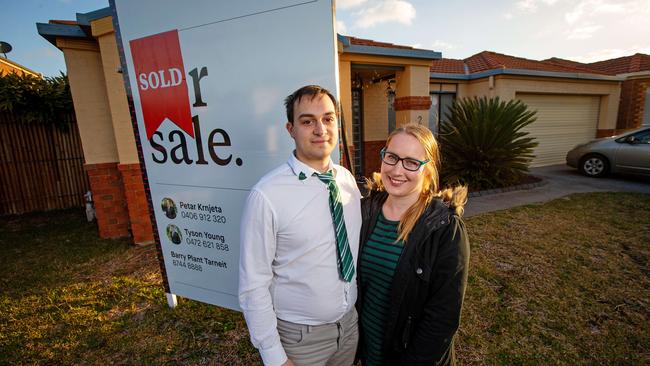Home affordability not solved by falling property prices: Core Logic
Despite falling prices, most first-time buyers still worry they won’t be able to enter the market.

Home ownership is still at the heart of the Australian dream but a majority of young people are still struggling to enter the now-rising housing market, sparking calls from industry for a more holistic approach to the affordability, rather than Band-Aid fixes.
Prices have fallen 5.2 per cent nationally over the past year, making housing appear more affordable to 54 per cent of those surveyed by property researcher CoreLogic for a new report titled “Perceptions of Housing Affordability 2019”.
Despite this, 83 per cent of people who don’t own a home are concerned they will not be able to make their first move into the market, with saving and lending restraints and property taxes proving the biggest barriers.
CoreLogic head of research Tim Lawless said the trend was a concern as volatile prices meant affordability was likely to have already peaked.
“The attitudes towards affordability have improved, simply because housing values have fallen, not by any sort of policy change or by any real remediation being introduced to address the issue from a longer term perspective,” Mr Lawless said.
“The fact that we’re now starting to see values rising once again is already starting to reverse the fact that affordability has improved.”
Seventy-nine per cent of survey respondents believed the best way to improve housing affordability was to remove stamp duty, Core Logic found.
Most state governments offer exemptions for first home buyers but 44 per cent of non-homeowners said the sting of a transactional tax on top of a purchase was stopping them from buying.
Mr Lawless said tax exemptions and lending assistance — like the limited first homebuyer deposit scheme promised by the federal government during the May election campaign — were “Band-Aid” fixes to the larger housing affordability problem.
He said governments needed to implement effective policy and invest in infrastructure to make real change.
“Strategies around improving housing affordability, at least from a government perspective, has been around stimulating the demand side of the marketplace,” he said.
“Or it’s been through interest rates coming down, which has improved serviceability.
“Rather than this Band-Aid approach that doesn’t really address the symptoms of affordability, what we need to see is more strategic options that address the supply side and help to open up geographic areas where housing is already very affordable.”
According to Core Logic’s findings, saving for a deposit was the most significant obstacle to buying a property cited by just under half of non-homeowners. Difficulty in accessing a loan became much more prevalent in 2019, moving from the sixth ranked obstacle to the second, affecting 44 per cent of potential homebuyers.
The report surveyed 2,220 Australians aged 18 to 69, and weighted the sample against Australian Bureau of Statistics population data to reflect the community.




To join the conversation, please log in. Don't have an account? Register
Join the conversation, you are commenting as Logout